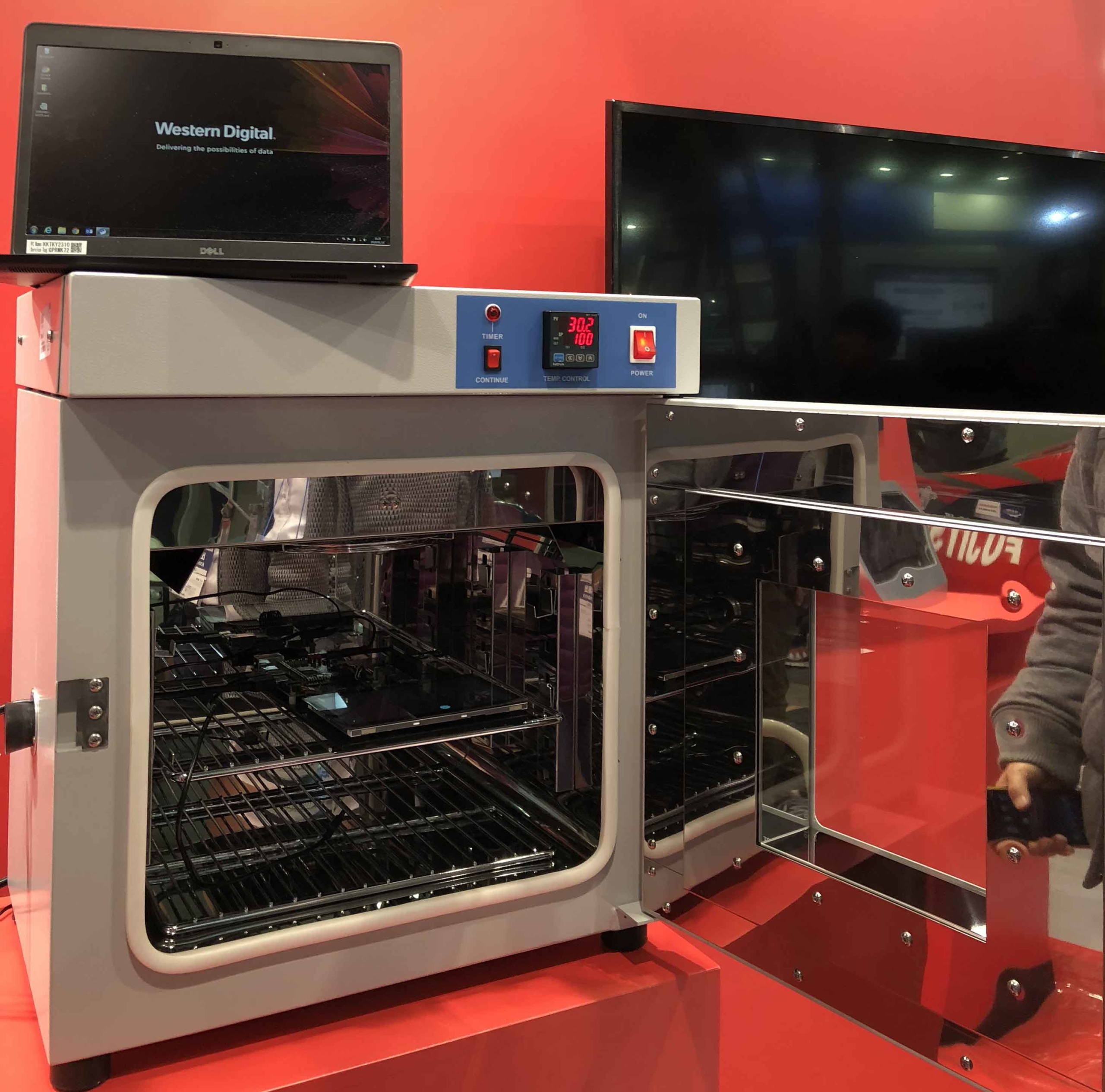We caught up with Martin Booth, Director of Marketing for Automotive and Industrial solutions at Western Digital at the recent Autotech Council meetup, hosted by Western Digital. Martin shared his thoughts on the role of data in the automotive market as it evolves from today’s connected cars to the autonomous vehicles of the future in this automotive Q&A.
 Data has become a big topic in the automotive industry. How do you view the current landscape?
Data has become a big topic in the automotive industry. How do you view the current landscape?
For many industries, data is becoming a way to drive revenues and profits. Historically, there was very little data collected and even less “available” for companies to use to try and improve products and services. Of course the Internet changed this in a massive way for end users – and we are now just starting to see these benefits coming to other “things”. When we talk about the Internet of Things (IoT), what we are really taking about is collecting data from sensors embedded in devices, and making that data available to be analyzed and used to enhance products and services. The automotive industry is one of the best examples of this with today’s connected cars and the autonomous vehicles of the future.
What are you seeing specifically in the automotive industry?
A few years ago, most cars were not really connected. Data might have been collected by the engine controller (as an example), and if there was something out of spec, your check engine light would come on. You would go to the dealer, where they could plug in a reader tool, and analyze what was failing and what needed to be serviced. In today’s cars there are already many more sensors than just a few years ago. Many cars already have a 4G connection to the outside world. OEMs are starting to collect this data, and are, for example, able to notify you by email about predictive maintenance needs.
Data is collected from the car – but what about data being sent to the car?
Yes, data is not just a one-way flow. We are already seeing manufacturers enabling over-the-air (OTA) updates of systems in the car. As software becomes more complex, the chance of having to update systems when the car is already on the road keeps increasing, and the ability to manage and do this remotely, not just at the dealer, is a major improvement in convenience for the consumer and cost savings for the manufacturer. Western Digital NAND Flash plays a key role in buffering data going into and out of the car, and we see dramatic growth in these requirements going forward.
So is this just driven by service data requirements?
Well, the service model is a simple example where it is easy to see some business benefits. However, that involves a relatively small amount of data. Map data is actually the biggest piece of data in the car today, and maps are not static. So updating maps in real time, especially as we go to HD maps that include things like street signs and lane markings, is another example driving bigger and bigger storage requirements in the car, and also in the cloud as all of the data being sent from the cars has to be stored and analyzed.
What about the era of autonomous drive?
Maps are certainly part of that, but autonomous drive will drive (no pun intended!) even more data requirements. In a typical prototype car today, many gigabytes per second of data are being generated by all of the camera, lidar and other sensor units. Sure, not all of that may need to be stored, but even the compressed versions of these streams can still be as much as 10 megabytes per second, which is too much or too expensive to be transmitted in real time, and needs to be stored and processed locally.
So not everything will be stored in the cloud in the future?
A lot of data of course will be stored and analyzed in the cloud. But not the most critical real-time data. The cloud will be, for example, where OEMs bring back data from the autonomous cars, to improve their overall driving algorithms, and this will involve exabytes of storage. From high capacity Active Scale systems to high performance IntelliFlash all-flash arrays, Western Digital has a wide set of solutions for these large scale data centers. But, storage at the edge also plays a critical role in the ecosystem – and there is always a trade-off between how much local storage you have, versus how much data you can transmit – especially in a mobile environment.
Does storage at the edge have special requirements?
In the automotive environment there are certainly some unique requirements, versus, for example, in other consumer devices. Operating temperature ranges are much wider, and reliability requirements are much more stringent. Western Digital has invested in engineering products specifically to meet these requirements specific to the automotive industry.

What about extracting the value from this data?
That is the million dollar question! The first step is to make the data available, reliably. I think our automotive customers will be looking more and more for end-to-end solutions, and to optimize the costs of storing, transmitting and analyzing this data. That is, I think, the critical change over the next few years. Data in a silo is not that useful to anyone. But edge storage and analysis will become key to identifying the most valuable data to transmit, and cloud storage will enable fast access and insights from the data that can drive new business models, or optimize existing ones.
Thank you, Martin.
Check out our recent blogs on the coolest automotive technologies at CES 2018 and how data is driving automotive innovation. Stay tuned for more insights on the automotive market from our experts in upcoming blogs.
Forward-Looking Statements
Certain blog and other posts on this website may contain forward-looking statements, including statements relating to expectations for our product portfolio, the market for our products, product development efforts, and the capacities, capabilities and applications of our products. These forward-looking statements are subject to risks and uncertainties that could cause actual results to differ materially from those expressed in the forward-looking statements, including development challenges or delays, supply chain and logistics issues, changes in markets, demand, global economic conditions and other risks and uncertainties listed in Western Digital Corporation’s most recent quarterly and annual reports filed with the Securities and Exchange Commission, to which your attention is directed. Readers are cautioned not to place undue reliance on these forward-looking statements and we undertake no obligation to update these forward-looking statements to reflect subsequent events or circumstances.
